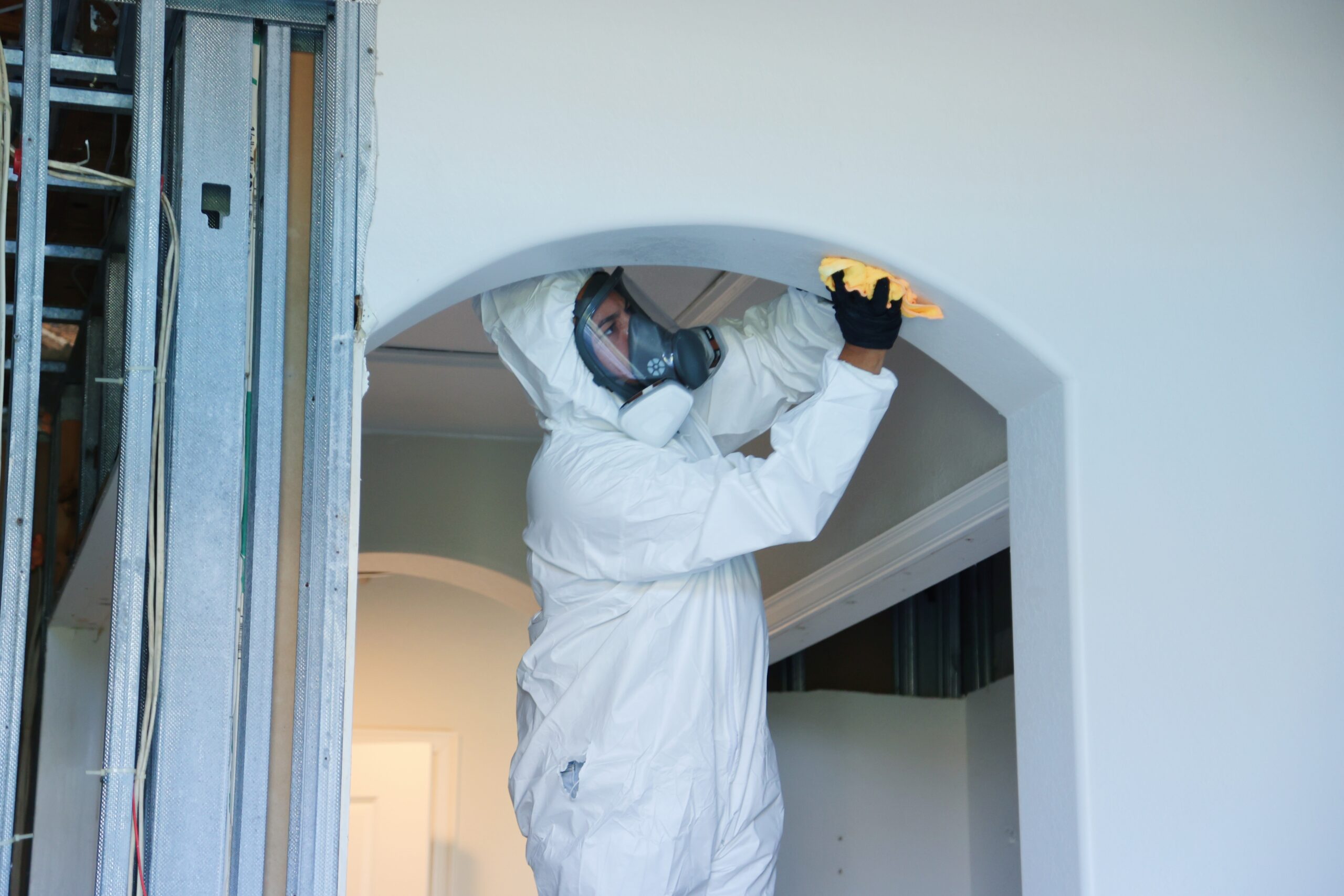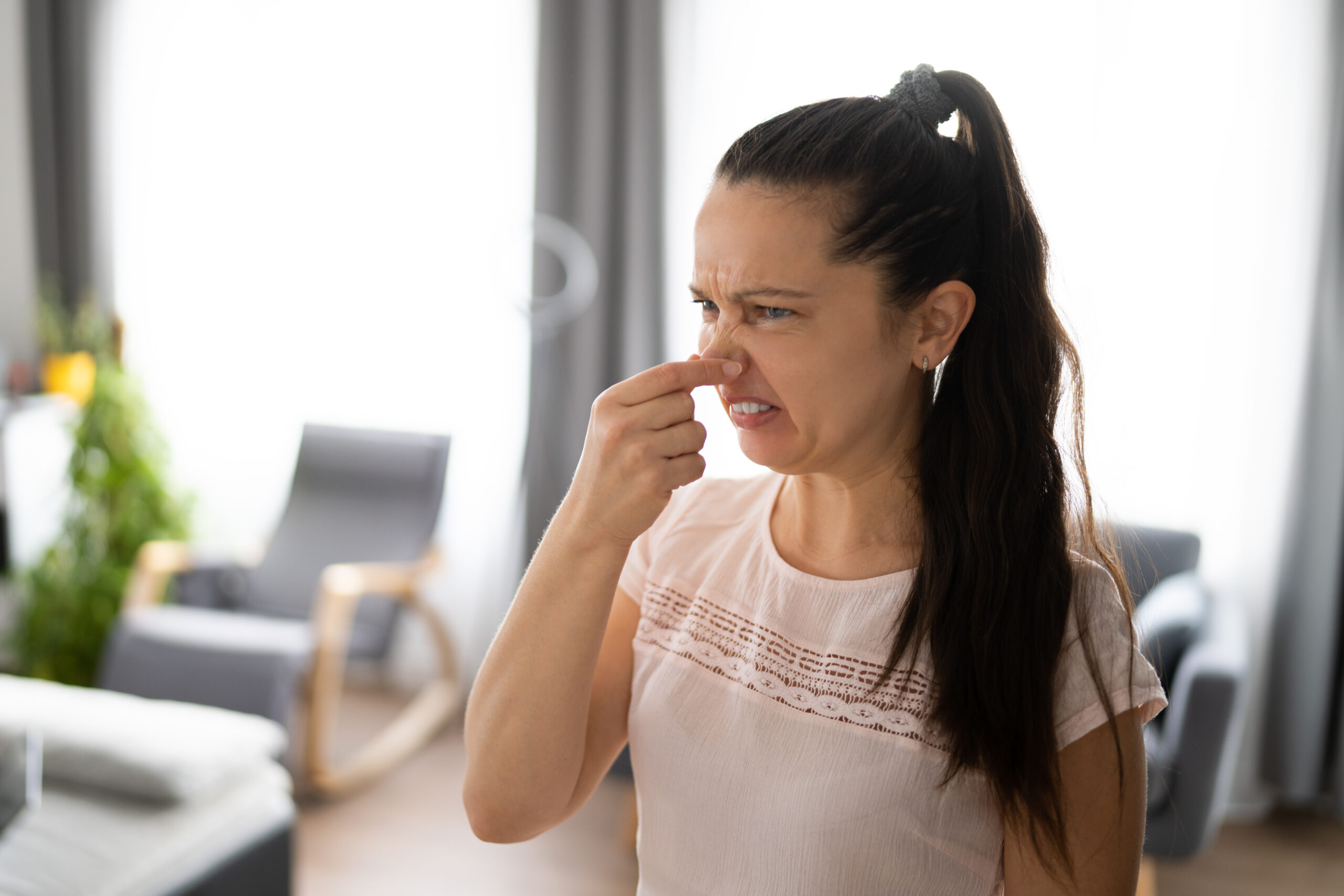You walk into one room and immediately smell something “off,” but the rest of the house seems fine. Why does that happen?
Here are several common reasons:
1. Humidity & Moisture Differences
- Mold and musty smells thrive in moisture. If one room has higher relative humidity or gets damp (from leaks, condensation, plumbing, or poor ventilation), mold can grow there first.
- Mold emits microbial volatile organic compounds (mVOCs), which are the “musty” or earthy smells often associated with mold. Environmental Protection Agency+2AirPF+2
- Rooms without good airflow or ventilation tend to trap moisture (bathrooms, laundry rooms, basements, under‑stair closets).
- If a room sits below an attic or crawlspace, moisture from above or below can drip or diffuse into it.
2. Sunlight, Temperature & Material Surfaces
- Sunlight helps dry surfaces and inhibit mold growth. Rooms with more natural light or sunlight exposure tend to stay dryer.
- Cooler surfaces (like walls, floors, windows) may cause condensation when humid air meets them, which can lead to moisture accumulation and mold growth.
- Porous materials (drywall, wood, insulation, carpets) more easily allow moisture to penetrate than tile, glass, or metal surfaces.
3. HVAC Flow & Air Circulation
- Air conditioning not only cools but also lowers humidity. If HVAC vents or ductwork deliver weak airflow to one room, that room may stay more humid.
- Rooms far from vents or with blocked registers may not benefit fully from AC dehumidification.
- Ducts themselves, if dirty or having moisture buildup, can harbor mold and spread odor to specific rooms.
4. Moisture Intrusion or Leaks
- Hidden leaks (roof, plumbing, pipes, flashing) or water intrusion can feed mold growth in walls, ceilings, or under floors.
- After rainstorms, attic leaks or through-wall leaks might drip into rooms below, causing odors to appear only in those rooms.
5. Hidden or Isolated Mold Growth
- Mold often grows behind wallboards, inside ductwork, behind baseboards, or under flooring — places you can’t see easily.
- If the odor is localized (only in one room) but no mold is visible, mold might be hidden behind the wall or in insulation / structure.
- Because mVOCs can travel through air and cracks, you might smell the mold before you see it.
How to Tell if the Smell Signals Mold Growth?
If the odor is mold-related, here are some warning signs:
- The smell is musty, “earthy,” like damp leaves or wet soil, or like old clothes left damp too long.
- The smell intensifies when humidity is high (warm, rainy days).
- Symptoms when you’re in that room: congestion, coughing, eye irritation, headaches — but improve when you leave the room.
- You find visible mold spots (black, green, white) around edges, ceilings, baseboards, vents.
- Stains, discoloration, peeling paint or wallpaper, warped surfaces in that room.
- Condensation or dampness on walls, windows, or ceilings in that room.
- The odor returns even after cleaning or airing out the space.
According to mold and moisture guides, a persistent moldy odor usually means mold is present somewhere and should be further investigated.
If the Smelly Room is Below the Attic, What Then?
Yes, it’s quite possible that mold or moisture from above (in the attic) is affecting rooms below:
- Attic leaks or roof issues may allow water to penetrate insulation or ceiling surfaces, and mold can spread downward.
- If attic humidity is high, moisture may migrate down through ceilings or walls.
- If the ceiling or drywall beneath the attic shows discoloration, sagging, or stains, that could hint at moisture intrusion.
- If that room is the first place that smells, it may be receiving moisture from above or from attic spaces.
What You Should Do Next (and When to Call Mold Zero)
Steps You Can Take Immediately
- Monitor humidity — Use a hygrometer. Keep indoor humidity between 40–50%.
- Improve airflow — Open vents, fans, or windows; unblock registers.
- Dry damp spots quickly — Wipe condensation, fix leaks.
- Check walls, ceiling, flooring — especially edges, corners, and behind furniture.
- Clean surfaces — Wash visible mold, but only if it’s a small area and it seems likely superficial.
- Run a dehumidifier in that room — reduce moisture so mold can’t thrive.
When to Call Mold Zero
- The odor is persistent and returns after cleaning.
- You have health symptoms correlated with time spent in that room.
- You suspect mold inside walls, ceilings, or ductwork (hidden).
- The area affected seems large or growing.
- There is past or ongoing water damage, roof leaks, plumbing leaks, or flooding.
As mold remediation professionals, we can perform a thorough inspection (including hidden spaces), remove mold safely, use our signature fog system to treat hard-to-access areas, and make recommendations to prevent regrowth.
If you’re in Pinellas County and worried about that odd smell or mold symptoms — reach out to Mold Zero. We’ll help you locate the source, remove the mold and restore healthy air quality.




